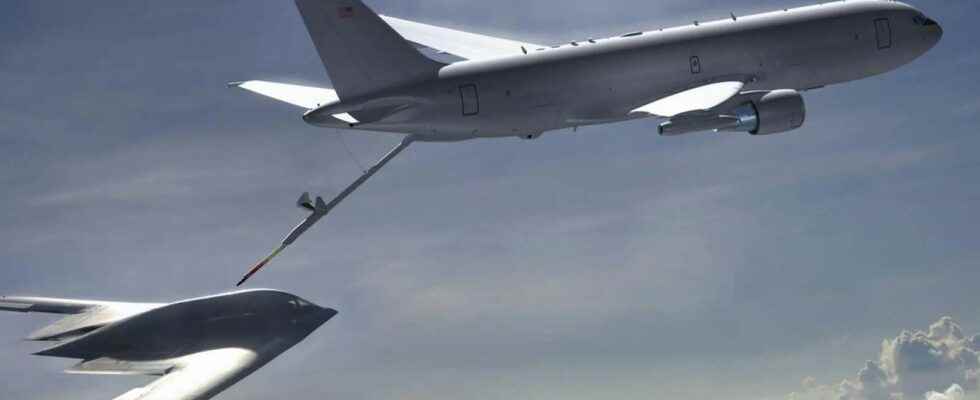Energize in the air. Planes and helicopters are capable of this, and Darpa wants to carry out this in-flight refueling with a laser beam on board under the wings of a refueling plane in order to recharge the batteries of the drones.
Maintain the drone in the air by recharging their batteries during their flight, here is the project of the American Darpa, the emerging technologies branch of the Pentagon. The new program called Airborne Energy Wells is to transform the tanker aircraft in giant and flying chargers for electric drones.
Unlike planes and helicopters which require connecting to the tanker to fill up with fuel, drone could be recharged via a beam laser. The Darpa consult the companies that could be likely to equip the KC-135 and KC-46 tankers Pegasus of the Air Force with a pod equipped with this underwing laser power supply. The power of this laser could peak at 100 kilowatts. In addition to this nacelle, a thermal control system that would enclose the laser device would be housed in the cabin of the tanker. By offering the possibility of recharging the dronein addition to increasing their autonomy in flightDarpa also intends to relieve them of batteries so that they can be a little more versatile and carry more sensors or weapons.
Remote laser recharge test conducted by US Navy research labs in 2019. © USNRL
High-power long-range charging
Recharge a aircraft in flight is not an easy task and the Darpa knows it. The interference atmospheric clouds and precipitation influence the power of the beams laser. The problems of thermal regulation of the laser system are also important, as well as the mass of the transmitter and the receiver. Work on laser reloading is not new to the United States Air Force.
From 2011, projects carried out by the Nasa on these systems have been undertaken. In recent years, remote charging tests have already taken place with 2 kilowatt lasers, which transmittedenergy over a distance of about 300 meters. Today, Darpa is taking this ambition up a notch with research into a system capable of delivering 50 times more power over much greater transmission distances.
Interested in what you just read?
